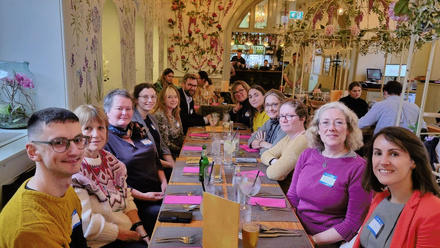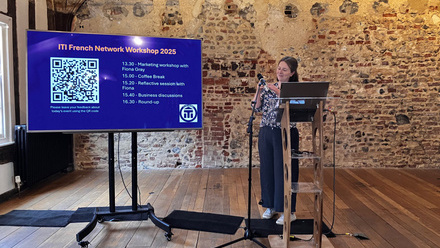In a linguist’s country garden
Claire Cox reflects on the relationship between translation and gardening, and how that’s worked in her own life
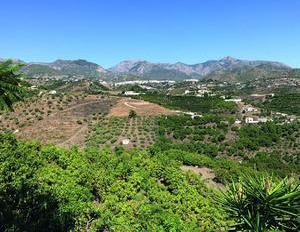
The mango farm Keith Baddeley and his partner run in Spain.
If the bottom fell out of the translation market, I like to think I’d become a gardener. Maybe a nursery owner, propagating jewel-like perennials, or maybe a landscape gardener, helping others achieve the gardens of their dreams… You can guarantee that if I’m not translating (which I love – don’t get me wrong!), I’ll be pootling around my (tiny) garden at home, or laying siege to my allotment, an altogether larger affair covering the size of a doubles tennis court (or so I’m told – I’ve never measured it, to be honest, but it’s a lot of green space; that’s for sure). My sons always used to say they knew when I’d had my daily fix of gardening as I’d be inwardly humming to myself and visibly more relaxed – and vice versa; I’m definitely much crabbier when I haven’t had my hands in the soil for a while…
The correlation between two different practices
Strangely enough, I don’t think I’m alone in this in the translating world. There’s a definite correlation between gardening and translating: they both involve that almost stamp-collecting mindset of accumulating things, be it vocabulary or gorgeous plants, no matter whether you can shoehorn them into your already cramped plot or not. They both require painstaking attention to detail: weeding out rogue words/weeds, yet standing back and considering the bigger picture too – is this a harmonious whole that fits within its setting, or does it jangle discordantly?
Then there are those Latin names: I didn’t study Latin at school, to my great chagrin, as they stopped offering it a couple of years earlier, but how wonderful to be able to pin a plant down by its Latin name based on its properties: Acanthus mollis or spinosus (soft or prickly, of course) and Digitalis lanata or viridiflora (woolly or green-flowered), for example. My knowledge of French and Italian usually comes to my rescue, but it can work the other way too and I may know an obscure French term from my knowledge of gardening names. German of course, is wonderfully pictorial in its names; peony is Pfingstrose (Whitsun rose) from the time it flowers. I know there are those who think you’re being pretentious when you use them rather than common names, but to my mind it’s important: they pin down exactly what you’re looking at, rather than just a generic plant family. Of course, it’s even more satisfying if you know both. Interestingly, I’ve noticed that common names are much more widely used Across the Pond than here: my son and his American wife, based just outside Boston, where they’ve bought their first house and started their first-time gardening journey, are much more likely to use the common names for plants: tickseed for Coreopsis, black-eyed Susan for Rudbeckia, Joe Pye weed for Eupatorium, bee balm for Monarda, to name but a few. (But then again, perhaps that’s because he’s not under his mother’s sphere of influence?)
Groups, networks and conferences
Hardly surprising, then, that so many colleagues are gardeners too. There is even, would you believe it, a Gardening Translators Facebook page (find it on Facebook), and if you want something more serious, the ITI SHEA Network is one of the new kids on the block.
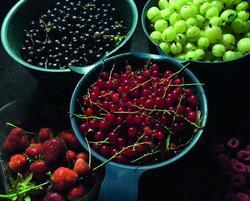
The rewards of a laden basket of produce you’ve grown yourself
When the Facebook group was set up back in 2015 by my colleague Anne Neto, she intended it as a friendly and informal place for translators who garden to exchange tips, requests for help and so on. We now number over 660 members, and it is a genuinely lovely place to share gardening photos, hints and queries online. I’ve met many like-minded colleagues through the group, who have gone on to become real friends. They include my balcony-gardening colleague Angelika Welt-Mooney in Berlin, who posts images of her resident red squirrel visiting her bird feeders and even has a beautiful pot-grown red climbing rose in memory of her beloved little dog, Paul. We managed to meet up for the first time at the Berlin ‘Translate Better’ workshop in 2018, and it was good to find that we are indeed kindred spirits. Networking along delightfully informal lines.
Amandine Lepers-Thornton, another Gardening Translators colleague, has even taken on an exciting new side hustle as a college gardener at St Hilda’s College in Oxford two days a week in addition to her main role as a translator/language tutor. Other translators have gone back to school to take Royal Horticultural Society (RHS) qualifications to reinforce their horticultural credentials for translations in the field. Yet another colleague, Lois Pearson, has set up a cut flower business alongside her translation career in the agriculture and horticulture sectors (@countrygirlflowers on Instagram), although she’s not actively selling her flowers at the moment as she’s focusing more on the translation side. She says she still finds it a great antidote to staring at the computer all day!
I’ve even found myself talking gardening at conferences: topics covered at the French Network dinner at last month’s ITI conference in Brighton included mango farming, thanks to Keith Baddeley, who, with his partner, runs a mango farm in Southern Spain, although they haven’t had a good harvest this year due to poor pollination (feast or famine, not unlike translation?!). We also touched on growing lychees, via Catharine Cellier-Smart, who lives on the beautiful island of Réunion. Another colleague (in Perth, Western Australia), Isabel von Prollius, constantly makes us green with envy as she describes her laden lime tree. All a far cry from East Sussex, but I’m really quite content with my lot close to the Garden of England.
Bridging borders and differences
I love gardening’s ability to bridge borders and break down language differences too. Zurich-based colleague Annie Keller tells a heart-warming story of how gardening helped a visiting Ukrainian family settle into their new life at her house after fleeing their home:
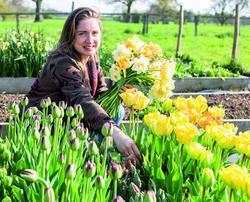
Translator Lois Pearson is building up her cut flower business
‘The day after they arrived, I showed them around our house and the surroundings and they also saw my garden and my sister-in-law’s chickens and rabbits. The older woman almost cried and told me that while they were travelling, she kept telling her relatives that her wish was to end up at a place with chickens and rabbits and a vegetable garden. She loves gardening and had to leave her house and her garden in order to flee and take her young nephew to a safe country. I told them they were free to work in the garden and plant whatever they wanted. Now they are spending their time in the garden whenever they have some time to spare. My flower beds have never been tidier and I am so happy to be able to provide a safe place for them where they can even do a bit of what they love.’
And that’s just it, isn’t it? Gardening hits something deeply rooted within us. It grounds us, literally. My fingernails are always black, despite wearing gloves and all the scrubbing I do afterwards, because I can’t resist getting my hands in the earth. The mindfulness of pricking out seedlings, weeding or sowing seeds takes us to another world and away from the stressful grind of deadlines and querulous clients. It’s acknowledged as being brilliant for our mental health, so much so that doctors are even prescribing gardening for anxiety and depression. It also offers good thinking time, much like walking in the countryside; it’s amazing how many times you’ll be struggling to find exactly the right word, but after a couple of hours in the garden, you suddenly hit the nail on the head. Your brain has done the thinking for you while you mindfully concentrate on those allimportant gardening tasks. And it’s excellent exercise, of course – and with a sedentary profession like translating, we all need something to get our hearts pumping and stretch all those underused muscles.
Last but not least, with the current cost-ofliving crisis and yet more energy price hikes on the horizon, the ability to grow free food is not to be sniffed at either. We may not all have an allotment, but it’s amazing what you can grow in pots, raised beds or even a window box at home. Growing your own food is superbly satisfying and so much better for you – from plot to plate in minutes, so no carbon-emitting food miles to worry about and usually grown without pesticides or artificial fertilisers too, if that’s the way you choose to grow – and why wouldn’t you? What’s not to like? I do recommend it – and you’ll be in very good company.
Never miss another Bulletin article

If you would like to read more features and articles on a wide variety of subjects relating to all aspects of the translation and interpreting industry, subscribe to ITI Bulletin. Alternatively, join ITI and get a free subscription included in your membership.


